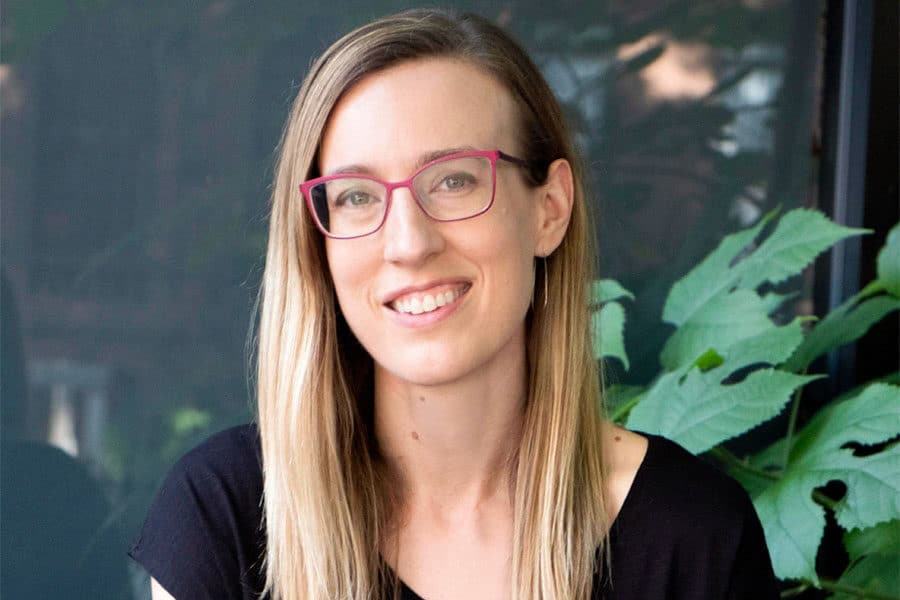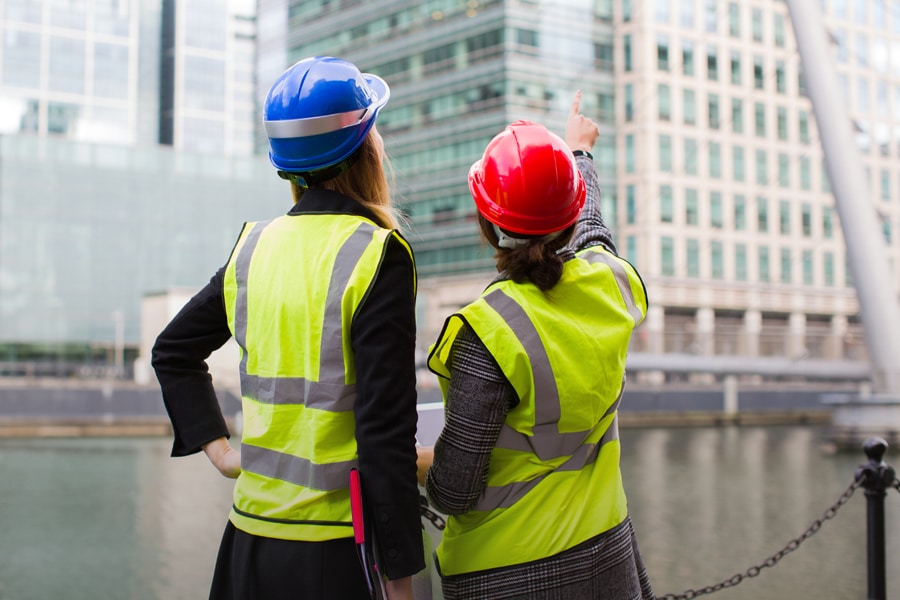Bryony Roberts, who owns Bryony Roberts Studio, a design practice in New York City, is known for her transformative projects that use methods from art, architecture and historic preservation to create engaging and inclusive public spaces. She’s especially interested in designing for neurodiverse communities that benefit from having multiple senses engaged, such as people with autism. Often working with a seven-woman design collaborative called Women in Practice/Work in Progress, Roberts devotes around 40% of her efforts to this passion.
In her practice―and with the WIP group―she collaborates with local partners to produce installations such as Outside the Lines on the grounds of the High Museum in Atlanta, in which light pink, orange and yellow fabric strips are hung at different heights from a winding frame that gives the installation a maze-like feel. Visitors walk through the strips (or navigate through them in a wheelchair) for a rich and varied tactile sensory experience that appeals to many people.
Roberts also teaches about architectural topics at Columbia University and lectures at other organizations. She has won numerous awards, including the Best Temporary Installation of 2019 award from the Architect’s Newspaper and the Architectural League Prize of 2018. In 2020, Roberts’ firm was a winner of the innovative New Practices New York 2020 by America Institute of Architects (AIA).
Built spoke with Roberts about the advice she’s gotten about the field and what she’d advise others wanting to follow in her footsteps.
Built: How did you get your start in design and architecture?
Roberts: I come from a family of architects. My grandparents and parents were all architects, each in a different area—architecture, residential, institutional and commercial—so I had a lot of exposure. My father and his parents were British, but I grew up in Los Angeles. I avoided architecture for a long time because I saw how tough it could be to be fulfilled and successful in the profession. In college I double-majored in humanities and studio art and had an art practice for a while. Then I studied architecture in graduate school and started my design practice.
Built: Who is someone that inspired you to work in the industry and why?
Roberts: Both my parents inspired me. My father was very committed to social justice and instilled that ethos in me. I really want projects to be fully accessible and inviting to everyone. For my projects, I learn from people with cognitive disabilities, people who are blind and those with mobility impairment. On a practical level there is the need for clear wide paths and easy navigation through the space, but there’s also a desire for challenge and exploration. There are very few spaces that are designed for play for people with disabilities.
Built: What’s the best advice you’ve gotten about the field?
Roberts: I got some really good advice just recently. “You’re going to face so many challenges, just define your practice and what matters to you and stick with it despite the obstacles. Over time, if you persevere, it’ll work out.”
Built: What advice do you have for people looking to follow in your career footsteps?
Roberts: It’s worth it to blaze your own trail in the field and make space for what you believe in. It is incredibly hard to do, but it’s worth it.
Built: What do you think the most pressing issue facing the construction industry is and why?
Roberts: I think it’s important for architects to really figure out how to learn from people and their lived experiences. It’s not part of the toolkit that’s taught in architecture school or often what we learn in offices, but I think it’s necessary for creating really inclusive and equitable spaces. You’ve got to learn the skills of talking to people, really listening and being curious about the huge range of diverse experiences.
Built: What keeps you up at night as an architect?
Roberts: Juggling creative expression and economics.
Built: How do you structure your time to fix the most important issues you face in your role?
Roberts: I’m kind of a nerd about time management. I found it’s really important to make time for creativity at the beginning of the day when my mind is fresh. That’s the only way for me to balance creativity and pragmatics. And then I just try to be really efficient and decisive with everything. Decisiveness helps move things along.















